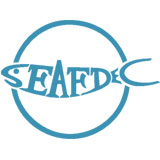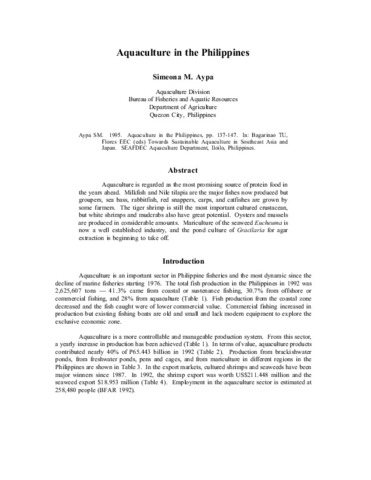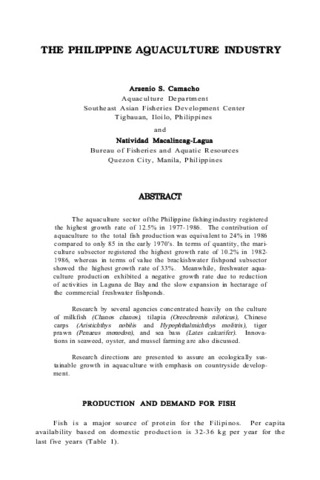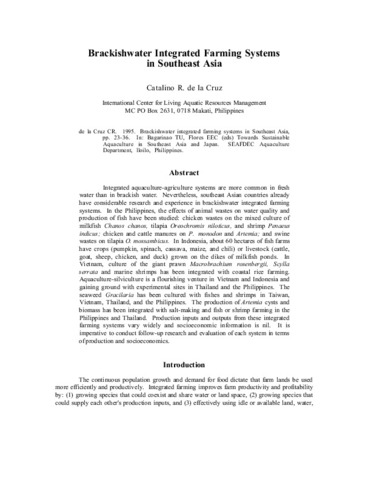Culture experiments on the harpacticoid copepod, Tisbintra elongata Mori, and evaluation of that species as a food organism for milkfish larvae
Share
Abstract
The mass culture of the harpacticoid copepod, Tisbintra elongata, indigenous to Panay Island were conducted, feeding them on several kinds of food materials. Salinity tolerance as physiological parameter was also examined. At the same time their efficiency as food for milkfish larvae was evaluated.
The highest density of 10.5 individuals/m/ was obtained in copepods fed on rice bran and fermented fish solubles at rates of 0.125 to 0.25 and 0.16 mg/indiv./day respectively. The provision of shelter as habitat was also supplementary for growth. This species of copepod was found to be euryhaline, and could grow to high densities in waters hypersaline to their natural habitat.
Statistically, no significant difference of growth was observed between the milkfish larvae fed on this species and Artemia nauplius. However, comparatively stable results were obtained using Tisbintra as food. In this rearing of milkfish larvae, those larvae whose sizewas 12.3 to 13.5mm in body length were considered to be just prior to morphological change.
Description
Contribution No. 69 from the Aquaculture Department of SEAFDEC.
Suggested Citation
Yamasaki, S., & Canto, J. T., Jr. (1980). Culture experiments on the harpacticoid copepod, Tisbintra elongata Mori, and evaluation of that species as a food organism for milkfish larvae. Memoirs of Faculty of Fisheries Kagoshima University , 29, 275-291. http://hdl.handle.net/10862/1092
Subject
Taxonomic term
Collections
- AQD Journal Articles [1248]
Related items
Showing items related by title, author, creator and subject.
-
Aquaculture in the Philippines
Aypa, Simeona M. (Aquaculture Department, Southeast Asian Fisheries Development Center, 1995)Aquaculture is regarded as the most promising source of protein food in the years ahead. Milkfish and Nile tilapia are the major fishes now produced but groupers, sea bass, rabbitfish, red snappers, carps, and catfishes ... -
The Philippine aquaculture industry
Camacho, Arsenio S.; Macalincag-Lagua, Natividad (Aquaculture Department, Southeast Asian Fisheries Development Center, 1988)The aquaculture sector of the Philippine fishing industry registered the highest growth rate of 12.5% in 1977-1986. The contribution of aquaculture to the total fish production was equivalent to 24% in 1986 compared to ... -
Brackishwater integrated farming systems in Southeast Asia
De la Cruz, Catalino R. (Aquaculture Department, Southeast Asian Fisheries Development Center, 1995)Integrated aquaculture-agriculture systems are more common in fresh water than in brackish water. Nevertheless, southeast Asian countries already have considerable research and experience in brackishwater integrated farming ...






